Notice to AEHS Members
Since April, 2009 the Members’ section of the AEHS web site has contained most of the new articles and much of the other content (images, sounds, videos, etc.) that is published by the AEHS.
Persons who were AEHS members at the end of 2008 are now Legacy Members with lifetime access to the Members’ section. Legacy Members have always had access to the AEHS Members' Bulletin Board.
Others may gain access to the Members’ section and Members' Bulletin Board by joining the AEHS.
Every AEHS member who has joined and provided an e-mail address has been assigned a username and password that allows access to the Members’ Bulletin Board (also known as the AEHS Forum), which has been active since 2003. This username/password combination was sent to each member via e-mail when that member joined the AEHS or provided an e-mail address. This same username/password combination is used to access the Members’ section of the web site. The username consist of the first initial of the member’s first name followed by the member’s last name,
all in lower case. If the password has been forgotten, one can gain access to
the Members' section via a substitute password automatically generated by the
AEHS Bulletin Board PROVIDED the member still has the same e-mail address as
when s/he joined. Members who are still unable to access the Membersí section
after trying the lost-password process should contact the Bulletin Board
Administrator for manual assignment of a new password and/or correction of their
e-mail address. Please state your name and mailing address in the e-mail.
![]()
The AEHS Bulletin Board allows AEHS Members to communicate
about aircraft engines and other topics. The Board presently has several
categories (Help, Air Racing, Collections/Restorations, Discussion, Members Only
(private) and Wants/Disposals, etc.) Within each category are one or more
forums.
We encourage every AEHS member to use the capabilities of the Bulletin Board.
The Board is organized in a hierarchical fashion:
Category
Forum
Forum...
Topic
Topic...
Post
Post...
Category...
Some of the Categories and Forums are public. While only AEHS members can post
to them, anyone with Internet access can read them. Others are private, are
designated so in their title, and are hidden from anyone who is not an AEHS
member. We encourage AEHS members to post messages in the public forums when
possible. This allows sharing of our collective knowledge with both AEHS members
and non-members alike.
| Preview of Articles in the AEHS Web Site Members' Section | |
|---|---|
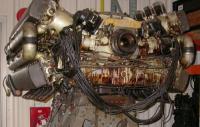 |
Expanded AEHS Convention Coverage Hundreds of Rare Engines Images and Presentations from Top Engine Experts |
 |
SR-71 Propulsion Part 1: The Airframe |
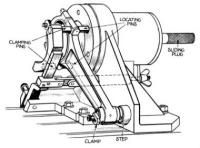 |
Aircraft Engine Manufacturing Details, Including The Napier Sabre Engine (3 parts) |
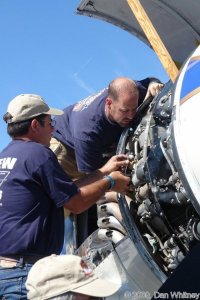 |
Reno Air Racing Coverage We go racing to see fast airplanes in their natural element, enjoy their functional beauty, color, drama, and to see some good completion. Reno provides all of these and more. AEHS coverage of Reno provides unparalleled engine details. Reno is not a just an air race, rather it is a happening, an event, a whole long week of sights and sounds! Some of the most intense competition occurs at the first of the week, with the qualifying sessions for all six racing classes spanning Monday through Wednesday. AEHS articles focus primarily on the “Unlimited” racing class, those racers that weigh more than 4,500 pounds, are powered by piston engines, and qualify at over 300 mph. These are for the most part WWII vintage fighters, with some of the airframes and engines extensively modified to allow average lap speeds that WWII fliers could only achieve in a “power dive”. |
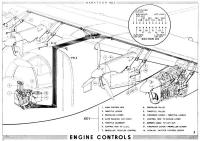 |
Engine Installations Powerplant sections of flight manuals are great sources of information about engines and the intricacies of their installations. The AEHS is pleased to present excerpts from manuals provided by Matt Savage of Mach One Manuals and Bruce Vander Mark. Please note that the manual excerpts have been condensed and edited for fast web viewing. Matt's manuals are complete, of much higher resolution, and are great values. For example: de Havilland Gipsy Queen Series 70-2 in the Handley-Page Marathon I (3.0M PDF)
|
 |
The Engines of Brodhead Richard heard about the Brodhead Airport and fly in years ago from Ed Doyle and Dennis Trone, who shared Richard’s interest in aircraft engines.The Brodhead Airport (FAA Identifier C37) is located about 35 miles south of Madison, Wisconsin.With three grass runways, it is home to EAA Chapter 431 and the Brodhead Pietenpol Association fly in. Over the years Richard has visited Brodhead many times,fascinated by the rich variety of new construction and antique restoration. He has seen many a junk pile turn into a flying airplane and running engine. Richard has taken a very special interest in the engines and has generously shared his collection of photographs that document the astonishing engines of Brodhead. |
 |
The Engineering Division W-1 At the time the United States entered World War I there were no aircraft engines in series production either here or abroad of 400 HP. The Liberty was designed to fill that need. By the end of the war the Liberty was considered a reliable engine with a rating of 400 HP @ 1,700 RPM. All the major powers were showing considerable interest in designing larger and larger aircraft engines to power larger bombers, an aircraft type they felt were going to be of great importance in warfare. The United States Army Air Service Engineering Division initiated the design of a 700 HP class engine to meet this need, and the 18-cylinder water-cooled W-1 resulted. |
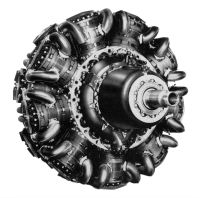 |
Comparison of Sleeve and Poppet-Valve Aircraft Piston Engines The development of the high output aircraft piston engine through the first half of the twentieth century represents a high point in the art of mechanical engineering. The available histories of aircraft piston engines are directed at the general reader, following a chronological development with considerable emphasis on the many detours and blind alleys this development occasioned. As an engineer reading these accounts I inevitably felt some significant analysis was missing. I have chosen to examine the sleeve-valve versus poppet-valve story because it should be of general interest to the enthusiast of aircraft engines and most of the arguments can be understood by non-engineers, although the analysis may be out of reach to some. The story also illustrates the difficulty in introducing a major variation into the design of a device already well along in its evolutionary development, a subject that should be of interest to engineers and particularly students of engineering. (28 pages) |
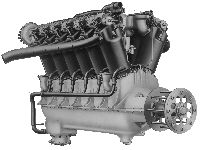 |
The Liberty Engine and Torsional Vibration When examining the engineering decisions of the aircraft engine designers of the past it is necessary to bear in mind the many gaps in the understanding of engine-related phenomena with which they had to cope. Torsional vibration problems occurred early and often in the history of aircraft engines. While surveying the subject of torsional vibration in aircraft piston engines I was struck by the use of a 45º bank angle in the twelve-cylinder Liberty engine rather than the 60º of most other successful V-12s and began to wonder what effects, if any, this had on the torsional vibration characteristics of that engine. This paper summarizes my findings. (9 pages) |
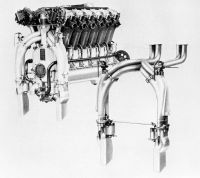 |
Packard Aircraft Engine Articles Packard as an Aero Engine Builder 1919-1923 (20 pages) |
Visit the Members’ Section Index for More Information